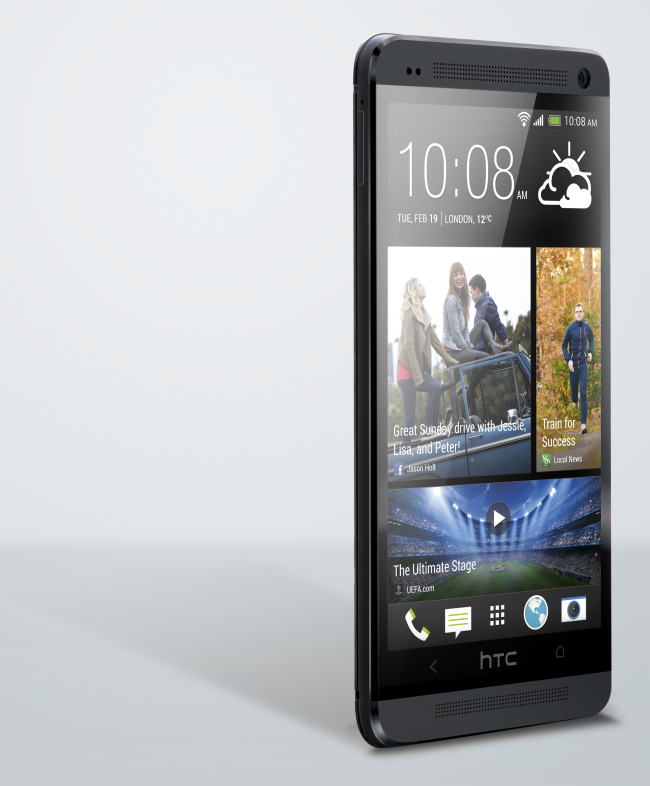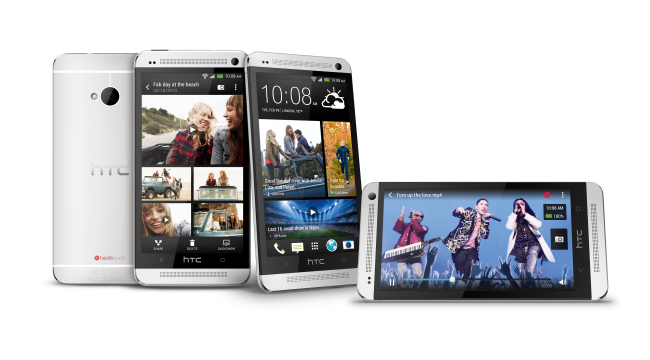Taiwan-based smartphone maker HTC has a lot riding on its latest device, enigmatically known as the One. The device went on sale in the UK this week, hits the shops in Ireland next week and it will be on sale in the US and the rest of the world toward the end of April.
HTC is one of those companies that causes the tech industry to fizzle, but fails to take all the glory for itself. Not because it doesn’t want the glory – it does – but it sets amazing software and hardware design standards, only to have the show stolen by rivals who don’t seem to put in as much effort.
What’s the cause of this malaise? Poor marketing, failure to execute? Making the wrong devices? I’m not sure, a little bit of all of this is to blame.
What cannot be denied is the fact that HTC makes great smartphones. Strategically it has had to learn some tough lessons. Here’s what I witnessed: in 2010 I wandered about the Mobile World Congress in Barcelona and watched in amazement as HTC’s stand was mobbed as people strained to see and touch its latest devices.
You see three years ago HTC used to swagger with breathtaking audacity, giving devices great names like Hero, Desire and Legend. Its secret weapon was HTC Sense, a set of personalization and content tools that frankly made competitors like Samsung and LG look lazy by comparison.
It had victory in its grasp.
But then things seemed to heat up and it seemed to me that HTC was attempting to flood the market with a confection of concept phones ranging from Pyramid, to Stallion, Ruby, Shooter, Bliss, Rider, Vigor – names that wouldn’t look out of place on a vending machine in a pub toilet.
Defeat seemed to be grasped from the jaws of victory.
Failed attempts at tablet computing, netbooks accompanied a lackluster marketing policy that meant more phones were entering the market than people or operators were aware of and HTC’s profits have suffered as a result. Brilliant and credible devices like the One X and One X+ just didn’t seem as to the fore as rival devices like the Samsung Galaxy S III and iPhone 4S and 5.
The company itself has admitted its marketing was to blame.
It seems to be the case that HTC is taken a leaf from Apple and Samsung’s book and is now concentrating on core devices one at a time.
With the HTC One, I think the company may have just recovered its swagger.
First impressions
The HTC One boasts an all-metal unibody – crafted from aluminium – and features a 4.7-inch full HD screen. Just holding the device is satisfying and it is extremely light – lighter than the iPhone 5, which is very light – and comes in two colours, black and silver.
The first thing you’ll notice about the device in terms of appearance is the range of speakers above and below the screen. These speakers are very important and may change your perception about how smartphones will be used in the future. Those front-facing BoomSound speakers have a dedicated amplifier as well as Beats Audio Integration and deliver a punch that will satisfy music and movie lovers’ quest for crystal clear sound.
The One comes with a front-facing 2.1-megapixel camera and a 4-megapixel rear camera that comes with a new UltraPixel technology that maximizes each and every pixel to give you a quality of photograph to rival competitors like the Samsung Galaxy S4 which has a 13-megapixel rear camera.
Both the One’s cameras can capture 1080p high definition video.
Once you switch on the device and sync with your accounts you’ll become instantly aware of a new home screen experience called BlinkFeed. This is HTC Sense re-imagined to provide you with a living newspaper of your life – a place where your Facebook and Twitter experiences merge with breaking news content from MTV and Reuters. HTC has struck deals with over 1,400 media sources resulting in potentially 10,000 articles a day whooshing onto your home screen.

BlinkFeed is quick and easy to get going and once running you have the sensation of a world of information just floating in your hand. It even reformats the articles so they can be read quickly and easily on the device.
Old stalwarts like weather still exist for the home screen and you can customize the home screen and add or remove apps and panels by just pinching in on the screen.
Specifications
The HTC One comes with Android Jelly Bean and has all the usual wireless capabilities, as well as meeting the new LTE 4G mobile requirements. One incredibly clever addition is an infra red sensor that doubles as the power button on the device. This works with a TV app that is intelligent enough to sync with most brands of TV set so you can turn your smartphone into a TV remote. This is not only cool but means the HTC One could be the Casio watch of our time and its hard not to imagine schoolboy pranksters turning on and off people’s TVs from across the street.
The HTC One’s display is capable of 468ppi resolution and the device comes with a quad core Qualcomm Snap Dragon 28nm chip, 2GB of RAM, 64GB of memory and 25GB of Dropbox storage.
If you ask me what the stand out feature of the HTC One is it has to be the camera technology included in the device. The HTC One comes with a camera that has a f/2.0 aperture lens and an UltraPixel sensor that gathers in 300pc more light than traditional smartphone sensors.
What this does is double the size of photos taken. The smartphone also comes with a gyroscopic lens that compensates for handshake to stabilise image capture.
The camera software on the device has been beefed up to include not only a host of Instagram-style formats for photos as well as editing tools that allow you to remove red eye, blur and other things like object removal, skin smoothing, face contour, eye enhancement and more.
The real star of the show when it comes to camera technology is a new feature called Zoe. A Zoe is a sequence of photographs derived from three seconds of video. What this allows you to do is to delve in to each and every frame to add effects or simply find the best shot of the bunch. This means you miss nothing. But it also results in another clever feature that allows you to knit together all the Zoes and photos shot during a given day into clever little movies that you can add effects and music to and share via email and social networking sites.
I think Zoes have the potential to transform our notion of digital photography and video. The only drawback is because of all the shots captured in a single Zoe, the Dropbox back up utility results in a large number of photographs being backed up in your Dropbox, which can be a pain in the backside to clean up if you are conscious of just how much space remains in your Dropbox folder.
HDR recording makes use of the dual microphones and audio processing allows you to capture really clean, rich sounds to accompany high definition footage.
The device also comes with a new feature called the HTC SenseVoice, which improves the call volume and quality of calls in noise environments.
Verdict
I think the real standout features of the HTC One are its BlinkFeed and its UltraPixel technologies which are going to set a standard for other device makers to follow. No doubt about it.
BlinkFeed is your life’s newspaper and I expect thanks to Zoe we’ll see our front page feeds fill up with Harry Potter-like sequences.
HTC has accomplished a lot with the One and I have to say that it has raised the technological bar in terms of the race against Apple and Samsung. Again, I have to hand it to HTC for creating content and personalization features and applying a standard of industrial design that differentiates it entirely from previous HTC devices as well as rivals’ devices that look and feel exactly the same generation to generation. Yes, Samsung I am talking about you and your Galaxy S 3 and 4.
HTC Sense is not dead, it has merely evolved.
The HTC One goes on sale in Ireland on 2 April across all the Irish network operators’ stores. It will go on sale across Europe, North America and most of Asia-Pacific before the end of April.
